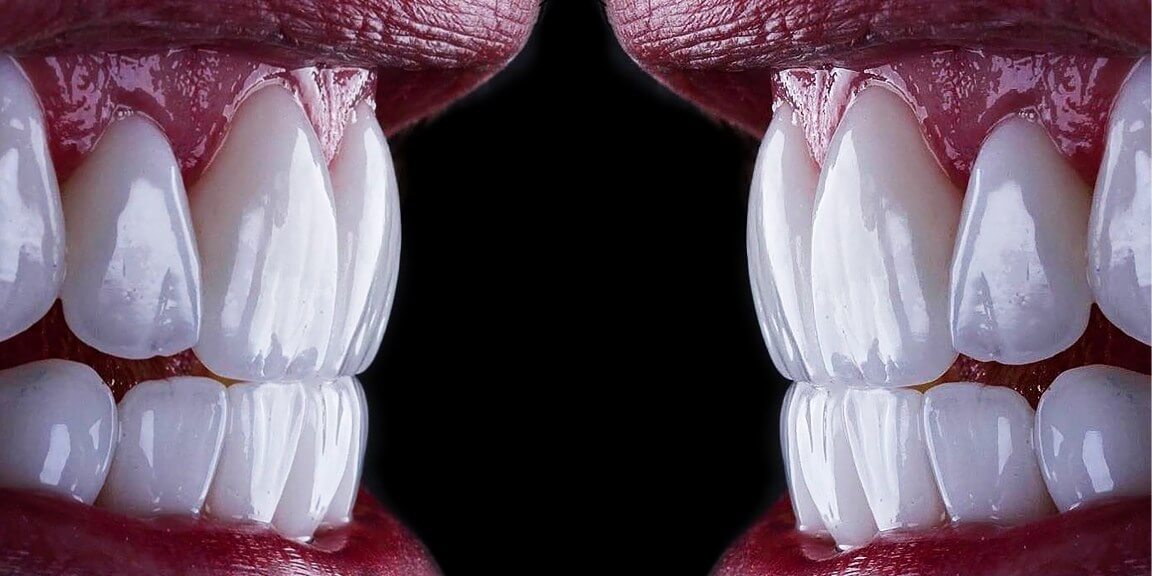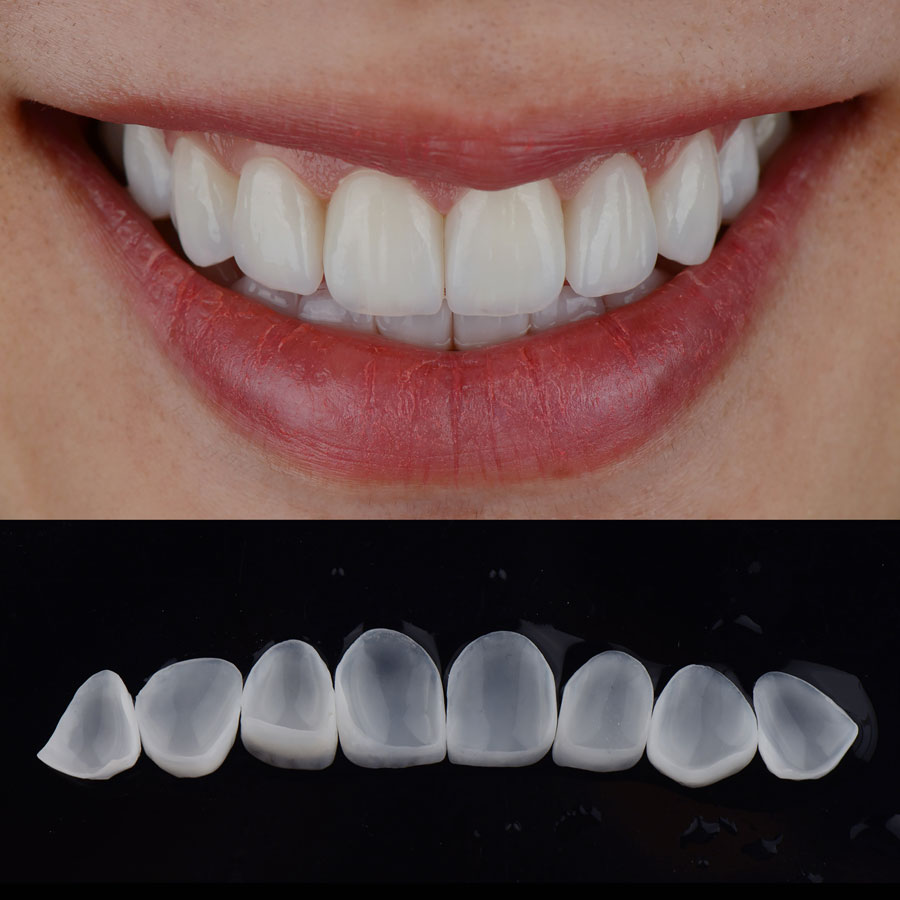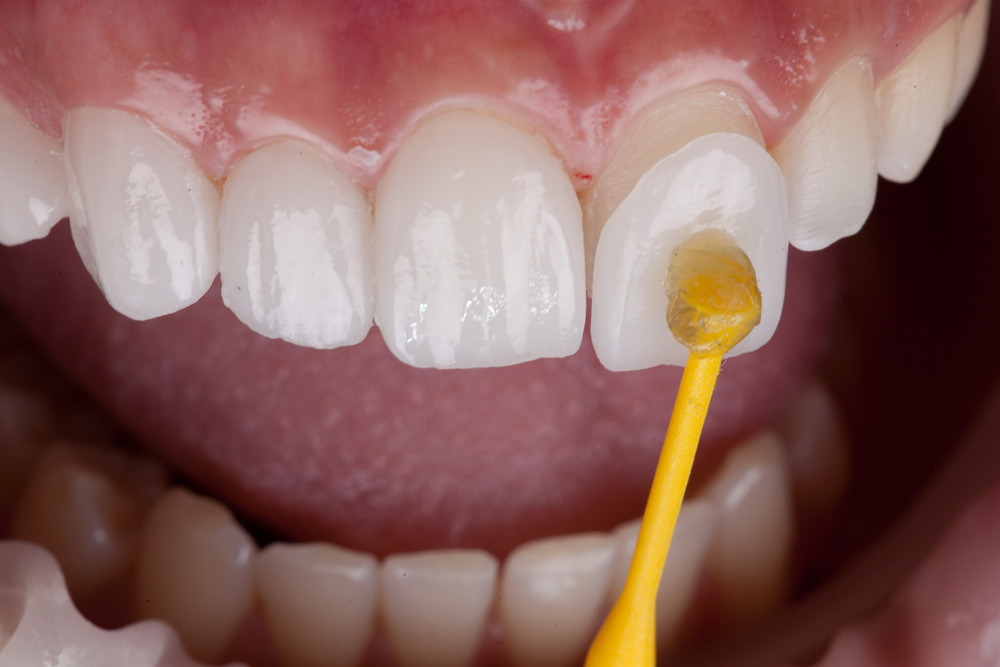What are the benefits of dental veneers?
The biggest benefit to veneers is improving the appearance of your teeth, giving you a brighter and more even smile. Dental veneers are often used to treat the following cosmetic occurrences:
- Broken or chipped teeth
- Severe discoloration or uneven coloring that can’t be fixed with whitening
- Gaps in the teeth
- Smaller-than-average teeth
- Pointed or unusually shaped teeth
Veneers can last for more than a decade, depending on the type of veneer you choose, making them a semipermanent investment that can make you more confident in your smile.
How to prepare for your appointment
Before you get your veneers, you’ll have a preliminary appointment with your dentist to discuss which options are right for you and how many veneers you want to have placed. In some cases, if teeth are crooked or uneven, you may need to have braces before your dentist can place the veneers.
At Cluny Court Family Dental, our dentist will often take X-rays at this stage to evaluate the health of your teeth. They’ll look for signs of tooth decay, gum disease, or the need for root canals. If you have any of these conditions, you may not be a candidate for veneers.
To get accurate sizing for your veneers, at the next appointment, your dentist trims down about half of a millimeter of your tooth (they remove the enamel using a grinding tool) before they take a mold (impression) of your teeth. This mold is then sent off to the lab to create your veneers.
How are veneers put on teeth?
It typically takes between 1 and 2 weeks after your dentist creates your mold to get your veneers back from the lab. Once your veneers are in, you can schedule an appointment to have them placed. At this appointment, your dentist evaluates the fit, shape, and coloration of the veneers to make sure they’re perfect for you. Next, your dentist thoroughly cleans your teeth. This is important, as it keeps bacteria from being trapped under the veneer and causing decay.
After they do this, they use the grinding tool to create a rougher texture on each tooth on which a veneer is to be applied. This makes it easier for the veneer to stick to the tooth. Your dentist then uses dental cement to bond the veneer to the tooth. They’ll use ultraviolet light to harden this cement quickly. Overall, this second appointment (where veneers are placed) typically doesn’t last longer than 2 hours. But it might vary depending on the number of veneers being done and if a local anesthetic is used.
What is the difference between veneers, crowns, and implants?
Veneers aren’t the same as dental implants or crowns. Veneers cover only the front surface of the tooth, while crowns encase the entire tooth. Veneers are also thinner than crowns: about 1 mm, compared to 2 mm. Veneers are less invasive, too. If you need a crown, your dentist will have to file or ground down more of your tooth to prepare it for the crown than would be necessary for the application of a veneer.
Meanwhile, an implant is installed in the bone to replace a missing tooth, and a crown is placed on top of that. It can take several months after the implant is placed for the area around it to heal enough for the replacement tooth to be placed on top.
How to take care of your veneers after they’re placed
Unlike other dental procedures, the recovery process doesn’t take an extended amount of time. Instead, once the veneers are cemented on, and any anesthetics wear off, you can eat and chew as you normally would. While the anesthetic is wearing off, be conscious of not chewing on your cheeks or tongue.
In some cases, immediately after the veneers are applied, you may notice that they feel a little rough. These rough spots (usually from extra cement that can adhere to the veneer) wear down after several days of normal eating and teeth brushing. If they don’t, your dentist can smooth them out.
Traditional porcelain veneers typically last at least 10 years (and some research suggests that they can sometimes last as long as 20 years), and no-prep veneers last around 5 to 7 years. Taking certain precautions can help make sure that you get the longest lifespan out of them as possible. These precautions include:
- Don’t chew on hard objects like pens, ice, or your fingernails.
- Never use your teeth to open packaging.
- Try not to chew with your front teeth. Eat harder foods with your back teeth only; cut up hard foods so that this is possible.
- If you grind or clench your teeth at night, get a splint or retainer to protect your veneers.
- If you play sports, you should wear a mouth guard.
- If you grind or clinch your teeth, you should get a mouth guard or retainer.











